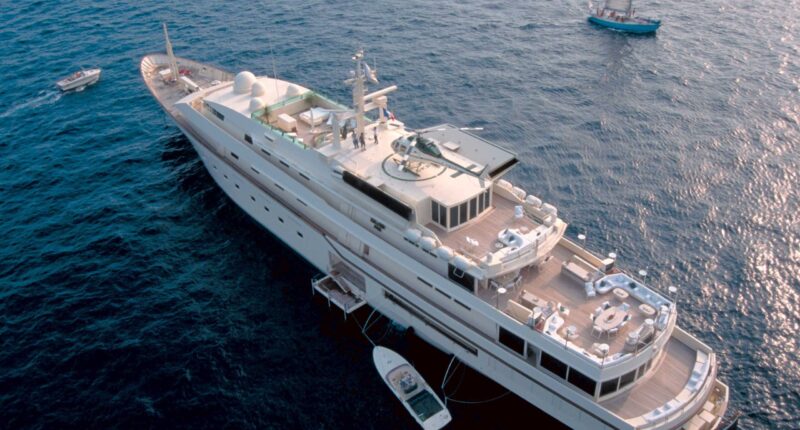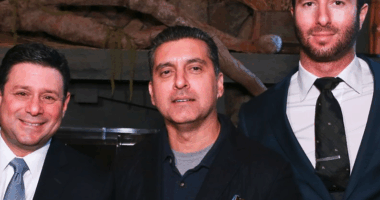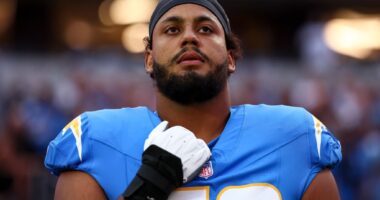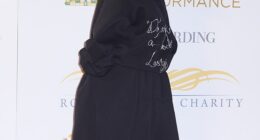On Tuesday, President Donald Trump hosted Saudi Crown Prince Mohammed bin Salman (MBS) at the White House. It was a mostly friendly gathering of two men who have long operated as both personal allies and geopolitical partners. However, the temperature in the Oval Office shifted sharply when an ABC News reporter decided to test the friendliness of the room.
Mary Bruce, one of the most seasoned correspondents on the White House beat, used her moment to ask a question almost no one in that room wanted spoken aloud. She brought up the CIA’s conclusion that the crown prince had approved the 2018 murder of Washington Post columnist Jamal Khashoggi. She asked why Americans should trust a leader implicated in such a brutal killing. She asked how this meeting squared with the United States’ stated commitment to human rights. It was a bold, direct shot across the polished calm of an orchestrated photo op.
Reporter: Is it appropriate for your family to do business with Saudi Arabia while you’re president? The us intelligence concluded you orchestrated the murder of a journalist…
Trump: Who are you with?
Reporter: ABC News
Trump: ABC Fake news. I have nothing to do with the… pic.twitter.com/qG9ktN7rtV
— Acyn (@Acyn) November 18, 2025
Trump interrupted before the crown prince could answer. His voice was sharp, almost vibrating with irritation. “Who are you with?” he snapped. Then he waved off the question entirely, calling Khashoggi “extremely controversial” and insisting, “Whether you liked him or didn’t like him, things happen.” He assured the room that MBS “knew nothing about it,” and chastised the reporter for “embarrassing our guest.”
Within hours, Jamal Khashoggi’s widow, Hanan, responded publicly, saying her husband’s character was no justification for murder, demanding an apology from the crown prince, and asking for compensation for the killing that tore her life apart. It was a striking reminder that the Khashoggi story, seven years on, remains unresolved, painful, and politically radioactive.
And somewhere within this extraordinary moment — a murdered journalist, a defensive president, a crown prince seeking legitimacy, and a reporter brave enough to disrupt the choreography — lies one of the strangest, most unexpected connective threads between them all.
A yacht.
Back in the 1980s, one of the richest people on the planet was a Saudi businessman named Adnan. Over a multi-decade career, Adnan earned an enormous fortune as one of the world’s most powerful arms dealers.
Born in Mecca in 1935, Adnan’s father was Saudi King Abdul’s personal doctor. As the son of the personal doctor to the King of Saudi Arabia, Adnan was in a particularly perfect position in the 1960s to forge a career as a trade broker between the Kingdom and the United States. The US and Saudi Arabia already had plenty of agreements related to oil. What Saudi Arabia really needed was weapons. So, working as a consultant to the Lockheed Corporation, Adnan brokered massive defense contracts between the two nations. He soon expanded to brokering deals for countries across the Middle East, and his client list grew to include Northrop, Raytheon, and Grumman. Between 1970 and 1975 alone, Adnan reportedly earned $106 million in commissions from Lockheed alone, the equivalent of nearly half a billion dollars today.
Adnan’s last name was… Khashoggi. Adnan Khashoggi died in 2017 at the age of 81.

Adnan Khashoggi (VALERY HACHE/AFP/Getty Images)
In 1958, Adnan’s older brother, Ahmad Khashoggi, welcomed a son. He named that boy Jamal… Jamal Khashoggi.
Jamal would grow up to become a journalist, a reform-minded Saudi insider, a critic of absolute power, and ultimately the victim at the center of a global political firestorm — the very name invoked in the Oval Office this week when a reporter dared to ask the crown prince about the CIA’s conclusion that he approved Jamal’s murder.
Here are some additional fun facts about Adnan Khashoggi:
- At his peak, his net worth was estimated at around $4 billion, which made him one of the three richest men on earth.
- He traveled with a reported harem of 11 “pleasure wives.”
- Had 12 homes
- Owned three commercial planes
- His living expenses were said to run as high as $300,000 PER DAY.
- Threw multi-day parties that became the stuff of 1980s legend.
- Adnan paid his first wife an $875 million divorce settlement. It was the largest divorce settlement in history at the time.
- He commissioned one of the most extravagant superyachts ever built — the 282-foot Nabila:

JACQUES SOFFER/AFP/Getty Images
Nabila
At the time of its construction in 1980, Nabila was the largest, most expensive private vessel on earth. The yacht was named after his daughter Nabila, who was born in 1962. Adnan ordered it from the famed Italian shipyard Benetti and spent roughly $100 million crafting it into a floating palace. That’s the same as spending $400 million today.
The yacht was outfitted with marble bathrooms, gold fixtures, a private cinema, a disco, a hair salon, an onboard hospital complete with an operating room, and enough crew and refrigeration space to support a small hotel. In true 1980s fashion, the yacht wasn’t just luxurious — it was cinematic. Hollywood literally turned it into a movie villain’s lair when it appeared in the 1983 James Bond film “Never Say Never Again,” portrayed as the futuristic headquarters of the villain Maximilian Largo.
But as larger-than-life as Adnan’s world was, it didn’t last. By the mid-1980s, his finances were crumbling under debt, legal pressures, and the fallout of geopolitical scandals. In 1987, after defaulting on a major personal loan from the Sultan of Brunei, the yacht was seized as collateral. The Sultan didn’t seem particularly interested in owning a Bond-movie palace, so Nabila was discreetly put on the market.

JACQUES SOFFER/AFP/Getty Images
Trump Princess
In late 1987, a 41-year-old Trump — then riding high as New York’s most flamboyant real estate showman — learned the Sultan wanted to sell quickly. Trump negotiated a deal reported at just under $30 million, a staggering discount from the yacht’s original build cost. The transaction technically ran through the Sultan of Brunei, but Adnan Khashoggi himself still had enough of an emotional attachment to impose one unusual condition: he didn’t want Trump sailing around the world on a boat named after his daughter, Nabila. So he demanded a name change. Trump agreed, shaved a million dollars off the price, and immediately rechristened the vessel the Trump Princess.
For a few years, the Trump Princess became one of Trump’s defining symbols. He staged photo ops on its decks, used it as a backdrop for magazine spreads, and kept it docked near his Atlantic City properties, even securing special dredging work so the massive hull could squeeze into the harbor. The yacht was enormous, loud, gaudy — and unmistakably Trump.
But the good times didn’t last. By 1991, Trump’s empire was drowning in debt. Casinos were failing, lenders were circling, and everything that wasn’t nailed down had to be sold. In that financial storm, the Trump Princess became expendable. He sold it for roughly $19–20 million to Saudi billionaire Prince Al-Waleed bin Talal. And remarkably, long after the yacht changed hands, Jamal himself would cross paths with its new owner.
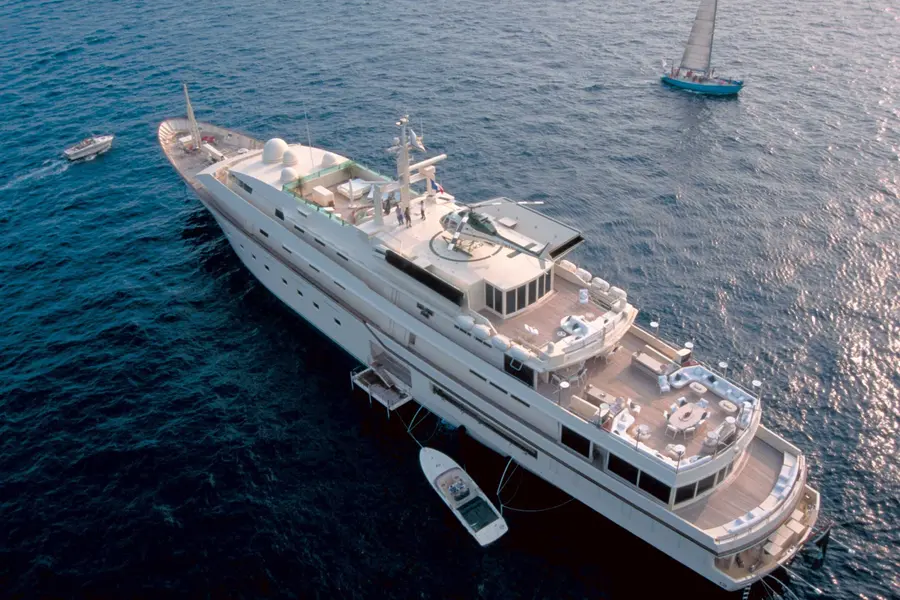
(Photo by Barry Iverson/Getty Images)
Kingdom 5KR
Prince Al-Waleed bin Talal, one of the most influential investors in Saudi Arabia, took possession of the yacht in 1991 and immediately renamed it Kingdom 5KR. The name was a nod to his company (Kingdom Holding), his favorite number (5), and the initials of his children. Under Al-Waleed’s ownership, the yacht continued its life as a staple of billionaire glamour. She appeared in ports like Antibes, Monte Carlo, and Cannes, a gleaming reminder of an earlier era of excess.
The weird connections don’t end there.
- In 1995, Donald was still feeling a financial pinch and was looking for a buyer for New York’s Plaza Hotel. The eventual buyer? Prince Al-Waleed, for $325 million.
- In 2001, Donald sold the entire 45th floor of Trump World Tower for $12 million. The buyer? The Kingdom of Saudi Arabia.
- Prince Al-Waleed and Crown Prince Mohammad are cousins. They are both grandsons of Ibn Saud, the founder of the Kingdom of Saudi Arabia.
In 2010, Prince Al-Waleed launched a news channel called al-Arab. The goal was for al-Arab to be an independent, privately owned broadcaster offering objective and agenda-free news for the Arab world. Who did Prince Al-Waleed hire to run al-Arab? Jamal Khashoggi.
Unfortunately, al-Arab did not stay on the air for very long. On the first day of broadcasting, al-Arab aired an interview with a Bahraini political dissident who denounced the government of Bahrain. Oh, I forgot to mention that al-Arab was based out of Bahrain. After years of planning, the network was shut down after just one day. Whose decision was it to interview the Bahraini dissident? And who conducted the actual interview? Jamal Khashoggi.
The decision was embarrassing, costly, and politically sensitive. The incident foreshadowed the tensions that would define his life in the years ahead. Jamal remained closely connected to Saudi elites but grew increasingly critical of the kingdom’s direction, especially after Mohammed bin Salman consolidated power.
By 2017, those tensions erupted. When MBS initiated a sweeping crackdown on journalists, activists, and political rivals, Jamal fled the country, fearing arrest. Just two months later, Prince Al-Waleed sent him an email encouraging him to return home and “contribute” to the crown prince’s vision. Jamal politely declined, expressing deep mistrust of the new political climate.
Within days of sending that message, Al-Waleed himself was arrested during the infamous Ritz-Carlton purge, where dozens of powerful Saudi figures were detained under what the government called an anti-corruption initiative. Reports later suggested the billionaire was pressured into surrendering billions in assets before being released. Even afterward, he lived under restrictions, closely monitored and unable to travel freely.
The Murder
A year later, on October 2, 2018, Jamal Khashoggi walked into the Saudi consulate in Istanbul to pick up marriage paperwork and never came out. What happened inside those walls is now one of the most chilling and thoroughly documented political assassinations of the century. According to Turkish intelligence, a 15-man Saudi team had flown into Istanbul that morning on two private jets. The group included intelligence officers, members of the crown prince’s personal security detail, and — in a detail that still shocks investigators — a forensic doctor specializing in rapid dismemberment.
The moment Jamal entered the consulate, he was confronted and overpowered. Turkish audio recordings captured his final pleas. He was reportedly told to “cooperate,” to which he answered, “I can’t breathe,” moments before he was killed. Investigators believe he was suffocated or strangled within minutes of entering the building.
What happened next was gruesome. The forensic specialist, Dr. Salah Mohammed Tubaigy, allegedly began dismembering Khashoggi’s body almost immediately, using equipment he had brought expressly for that purpose. His remains were never recovered. Turkish officials believe they were either dissolved in acid or destroyed in a furnace; Saudi operatives were later caught repainting rooms, removing hard drives, and attempting to cover up the crime.
The 15 operatives did not linger. After the killing, one member of the team put on Jamal’s clothes and walked out a back entrance in an attempt to create the illusion that he had left alive. The real team checked out of their hotel, returned to the airport, and flew back to Riyadh that same day.
The operation — its precision, its planning, the travel logistics, the presence of a forensic expert — made clear this was not a rogue act. It was ordered. Deliberate. State-directed.
Worldwide outrage followed. Human rights groups demanded accountability. Journalists around the globe published investigations. And U.S. intelligence agencies conducted their own assessment, eventually concluding that Crown Prince Mohammed bin Salman approved the operation. He denies this, but the evidence was overwhelming enough that the CIA, NSA, and other agencies reached the same determination.
Saudi Arabia later put a handful of the operatives on trial, sentencing several to prison, though the proceedings were widely criticized as opaque and toothless. The key members of the 15-man team — including intelligence officer Maher Abdulaziz Mutreb and Dr. Tubaigy — remain inside Saudi Arabia, shielded from independent review. Many of the men sanctioned by the United States have never faced meaningful public accountability.
Meanwhile, the yacht at the center of this strange constellation of relationships kept sailing — a silent witness to the lives of the men whose stories it had intersected. In October 2024, the Kingdom 5KR made news again when it crashed into a dock in Tunisia, suffering significant hull damage. Images of the once-iconic vessel scraping along a concrete pier circulated worldwide.
Here’s one final fun fact to leave you with: In 2004, Nabila Khashoggi, Adnan Khashoggi’s daughter and yacht namesake, married James Cox Chambers. James is the grandson of James M. Cox, the founder of what today is known as Cox Enterprises. His mother, Anne Cox Chambers, inherited 49% of Cox Enterprises. When she died, she split her 49% stake in three equal parts to her three children. So James Cox Chambers owns around 16% of Cox Enterprises, which gives him a net worth of around $6 billion.
